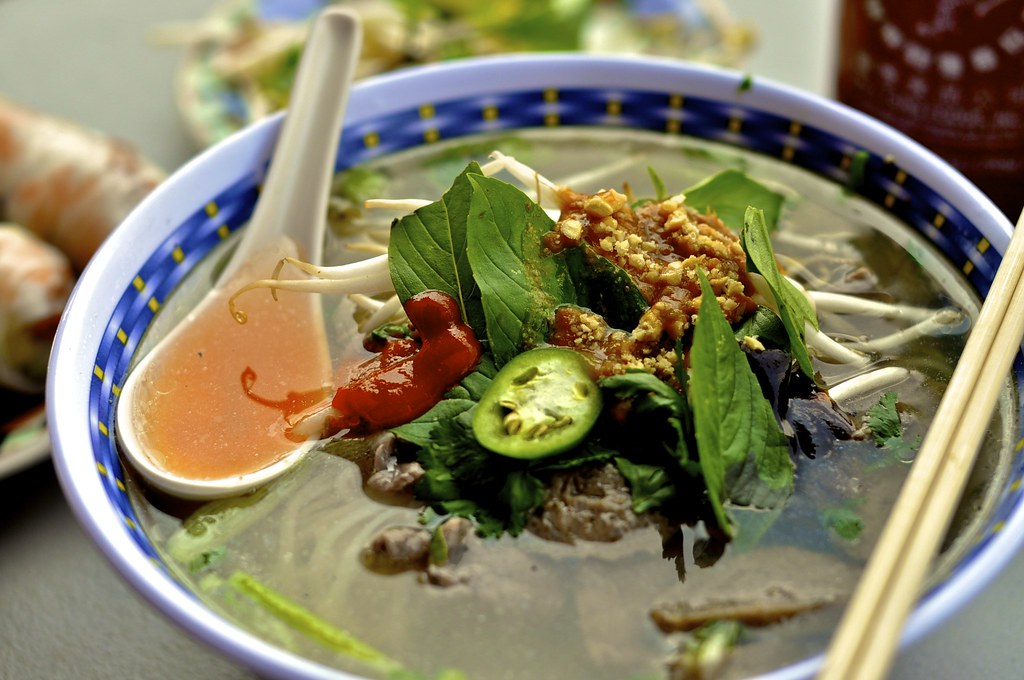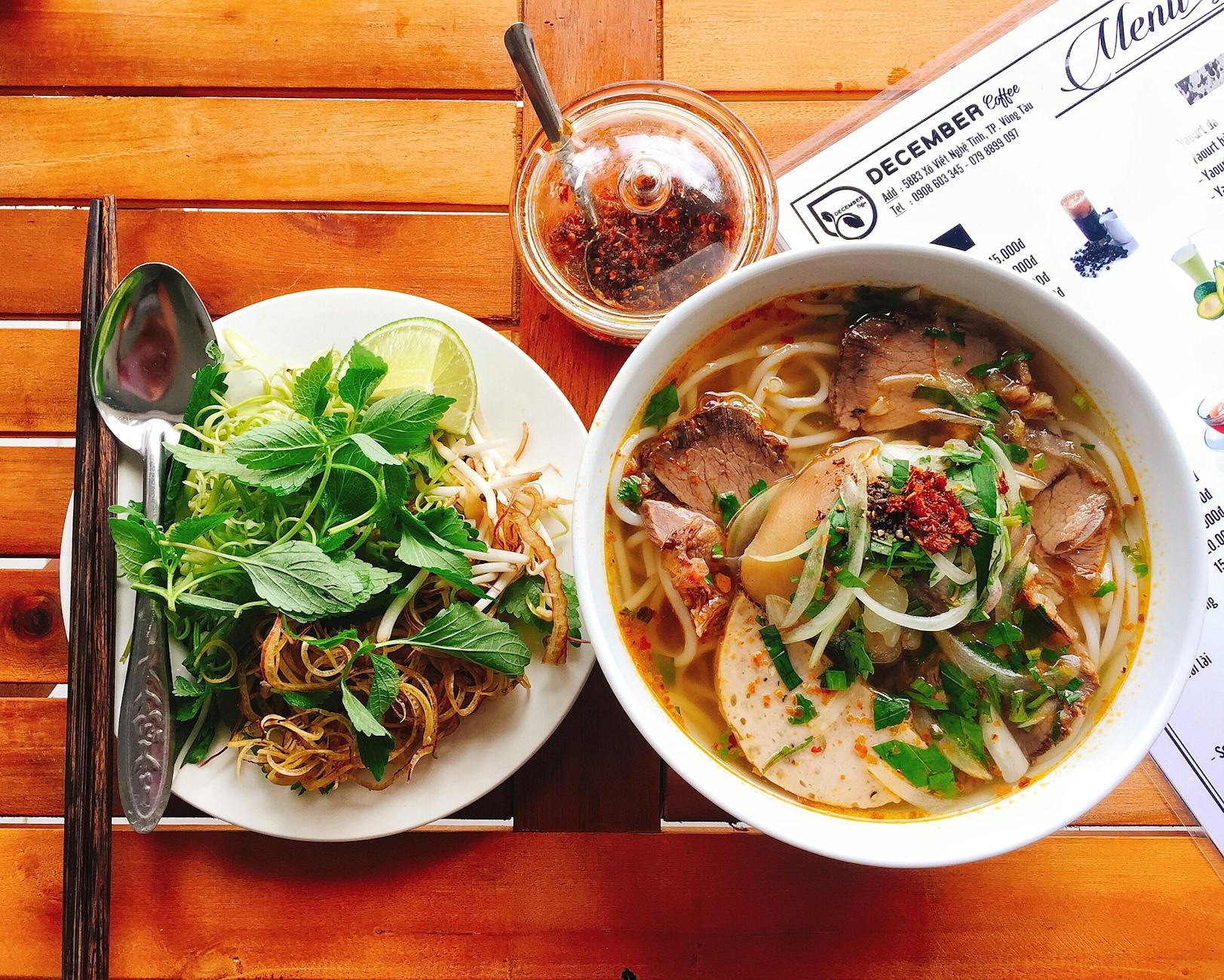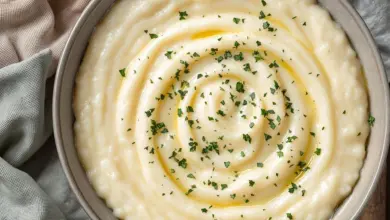
Pho, with its rich broth, fresh herbs, and hearty ingredients, is a favorite comfort food for many. But if you’re managing diabetes, you might wonder if it’s safe to enjoy. The answer is yes — with some thoughtful choices. By focusing on lean proteins, reducing noodle portions, and loading up on veggies, pho can be a delicious and balanced meal that fits within your dietary needs.
For more insights on keeping blood sugar stable while eating pho, check out this useful YouTube video.
Understanding Diabetes
Diabetes is a condition that affects how your body processes blood sugar (glucose). Whether you’re managing Type 1 or Type 2 diabetes, understanding the differences can help you make better dietary choices — even when it comes to enjoying meals like pho.
Type 1 Diabetes: Insulin Production and Dietary Needs
In Type 1 diabetes, the body’s immune system mistakenly attacks insulin-producing cells in the pancreas. Without enough insulin, glucose can’t enter cells to provide energy, leading to high blood sugar levels. For someone with Type 1 diabetes, managing blood sugar is like being a careful driver, navigating without a GPS — it requires precise planning and constant monitoring.
Diet plays a vital role here. Since those with Type 1 diabetes must rely on insulin injections or a pump, consistent carbohydrate intake is essential to avoid sudden blood sugar spikes or drops. Whether you’re considering a bowl of pho or other meals, it’s important to measure the carbs (like noodles) and balance them with healthy fats, proteins, and veggies.
For more information about Type 1 diabetes, check out this guide from Diabetes UK.

Photo by Pavel Danilyuk
Type 2 Diabetes: Insulin Resistance and Dietary Control
Type 2 diabetes occurs when the body becomes resistant to insulin or doesn’t produce enough. Think of it as having the keys to open a door, but the lock has become stiff over time. This condition is more common and heavily influenced by lifestyle factors like diet, weight, and exercise.
For individuals with Type 2 diabetes, dietary control is a cornerstone of care. Meals should focus on reducing simple carbs and sugary foods, relying on whole grains, lean protein, and plenty of non-starchy vegetables instead. When eating dishes like pho, managing portion sizes for noodles and opting for low-sodium broth can make a significant difference in keeping blood sugar stable.
For tips on making healthier food choices with diabetes, visit MedlinePlus’ diabetic diet guide.
Nutritional Overview of Pho
Pho, a traditional Vietnamese dish, combines a flavorful broth with fresh ingredients to create a comforting and nourishing meal. While it’s beloved for its taste, understanding its nutritional profile is key, especially when managing conditions like diabetes. Let’s break down what makes up a bowl of pho and its caloric and carbohydrate content.
Ingredients in Pho
A typical pho bowl includes a mix of components that work together to create its signature flavor. Here’s what you’ll commonly find:
- Broth: Made by simmering beef or chicken bones with spices like star anise, cinnamon, and cloves. This aromatic base is rich in flavor and nutrients, providing essential protein and collagen.
- Rice Noodles: These are the primary carbohydrate source in pho. They’re light yet filling, though they can contribute significantly to the carb count.
- Proteins: Usually beef (such as flank, brisket, or rare steak) or chicken. Tofu is a popular alternative for plant-based eaters.
- Fresh Herbs and Vegetables: Basil, cilantro, bean sprouts, and scallions add layers of flavor. Lime and chili slices are often served on the side for customization.
- Condiments: Hoisin sauce, chili sauce, or fish sauce can enhance the taste but add sodium and sugar.
The variety of ingredients can make pho nutrient-dense. However, the combination also means that the nutritional content varies depending on portion sizes and specific choices.

Photo by RDNE Stock project
Caloric and Carb Count
The calorie and carbohydrate content of pho depends on how it’s prepared. Generally, a bowl can range between 350 to 650 calories, with a significant portion coming from the rice noodles and broth. Here’s a closer look:
- Rice Noodles: A standard serving typically contains about 25 to 80 grams of carbohydrates, depending on the portion size. These noodles can cause blood sugar spikes if consumed in large amounts.
- Protein Choices: Beef or chicken provides 15-30 grams of protein per serving, which helps balance the meal and manage blood sugar levels.
- Broth: The broth on its own is low in calories, but sodium levels can be high — sometimes exceeding 1200 mg per bowl.
- Additional Ingredients: Bean sprouts and herbs add volume but minimal calories, while condiments like hoisin sauce can increase sugar content quickly.
For a detailed breakdown, see Healthline’s guide to pho nutrition or this calorie reference for pho noodles and toppings.
Understanding these numbers makes it easier to adjust portion sizes or swap ingredients to better suit a diabetic-friendly diet.
Can I Eat Pho with Diabetes?
If you’re managing diabetes, navigating meal choices can feel like walking a tightrope. The good news? You can enjoy dishes like pho by making mindful adjustments. This comforting Vietnamese soup can be tailored to your health needs while still satisfying your cravings. Here’s how.

Photo by Jer Chung
Managing Carbohydrate Intake
Rice noodles are a staple in pho but also the primary source of carbohydrates, which can significantly impact blood sugar levels. To enjoy pho without the concerns of a glucose spike, adjusting your portion sizes is critical.
- Opt for small noodle servings: Stick to a smaller portion of noodles, such as half or even a quarter of the usual serving. This can drastically reduce the carb load.
- Broth over noodles: Focus more on the flavorful broth and other low-carb components like herbs and vegetables. You’ll still get the rich taste without overloading on carbs.
- Substitute with low-carb noodles: Alternatives like zucchini noodles or shirataki noodles work well for creating a diabetic-friendly version of pho. Learn more about low-carb options here.
These tweaks allow you to keep your blood sugar levels in check while enjoying the dish’s essence.
Choosing Healthy Ingredients
The ingredients in pho can make or break its diabetic-friendliness. Small swaps in traditional recipes can significantly improve the meal’s impact on glucose levels while keeping it flavorful.
- Choose lean proteins: Go for chicken breast, tofu, or lean beef cuts. These provide necessary protein without excessive fat or calories.
- Reduce sodium: Restaurant pho often has high sodium levels. Consider making it at home using low-salt broths or soy sauce alternatives like coconut aminos.
- Pack in non-starchy veggies: Increase portions of bean sprouts, broccoli, or bok choy for added fiber and nutrients while minimizing carbs.
- Limit sugary sauces: Many pho condiments, like hoisin or chili sauce, can contain added sugars. Use them sparingly or seek diabetic-friendly versions. See this diabetic-friendly pho recipe for ideas.
Tweaking your pho ingredients can transform it into a dish that’s both delicious and healthy, showing that diabetes doesn’t have to mean giving up your favorites.
Recommendations for Enjoying Pho with Diabetes
Pho can be a delicious and satisfying meal for individuals managing diabetes, but it requires some smart strategies to prevent blood sugar spikes. With a thoughtful approach, you can savor this comforting Vietnamese dish without stress. Below are practical recommendations to make your pho experience diabetes-friendly.

Photo by Quang Nguyen Vinh
Pre-meal Strategies
Managing blood sugar begins even before your first bite. Pre-meal strategies can help minimize blood sugar fluctuations.
- Start with protein and vegetables: Prioritize lean protein and non-starchy vegetables before diving into rice noodles. Protein slows carbohydrate absorption, while vegetables add fiber that stabilizes blood sugar levels. Order extra bean sprouts, bok choy, or similar low-carb veggies from the menu to enhance your meal.
- Hydrate beforehand: Drinking a glass of water before eating can help curb overeating and prevent unintentional carb overload. This simple step sets you up for better portion control.
- Request modifications: If you’re dining out, don’t hesitate to ask for a smaller portion of noodles or extra vegetables. Most restaurants are accommodating when it comes to dietary preferences.
For more guidance on meal planning with diabetes, explore the CDC’s diabetes meal tips.
Post-meal Monitoring
Monitoring your blood sugar after eating pho is just as important as the meal itself. It helps you understand how your body responds and informs future food choices.
- Check blood sugar levels: Test your blood sugar 1 to 2 hours post-meal to see how the ingredients affected your levels. Ideally, blood sugar should not rise more than 30-40 mg/dL after eating.
- Track your meals: Keep a food diary to jot down how your body reacts to different pho variations. Over time, you’ll know exactly how to tailor your bowl for the best results.
- Incorporate physical activity: If feasible, taking a short walk after your meal can help lower blood sugar. Think of it as a natural way to complement your dietary choices.
Get more tips for post-meal blood sugar management at Diabetes.org’s meal planning guide.
By combining pre-meal preparation with post-meal mindfulness, enjoying pho becomes not only possible but also stress-free for individuals with diabetes.
Possible Alternatives to Traditional Pho
When you’re managing diabetes, making traditional meals like pho work for you may require minor adjustments. But what if you’re in the mood for something similar, yet more diabetic-friendly? From low-carb alternatives to exploring other Asian dishes, there are plenty of options that balance flavor and health.
Low-Carb Pho Recipes
Reducing carbs in pho doesn’t mean sacrificing its rich, comforting flavor. By swapping rice noodles for low-carb alternatives, you can still enjoy this iconic dish guilt-free. Here are a few creative noodle substitutes to try:
- Zucchini Noodles (Zoodles): Spiralized zucchini offers a fresh, crunchy texture that works perfectly in a steaming bowl of pho. Plus, it’s loaded with vitamins and has nearly no carbs.
- Shirataki Noodles: Made from konjac yam, shirataki noodles are nearly calorie-free and absorb the pho broth seamlessly. This makes them one of the best low-carb substitutes.
- Cabbage or Bok Choy: Thinly shredded cabbage or bok choy can act as a noodle stand-in while adding crunch and extra fiber.
- Kohlrabi Noodles: A lesser-known option, pre-spiralized kohlrabi noodles are low in calories and have a great texture.
Many of these substitutes can be found at any well-stocked grocery store or Asian market, making the swaps easy to implement. For a step-by-step guide to preparing a low-carb pho, check out this keto pho recipe. It features zucchini noodles and keto-friendly broth components.

Photo by FOX ^.ᆽ.^= ∫
Healthy Asian Cuisine Options
If you’re looking to branch out beyond pho, there are plenty of healthy Asian dishes that align with diabetic-friendly meal plans. These recipes can provide variety while emphasizing low-carb, nutrient-dense ingredients:
- Thai Coconut Soup (Tom Kha Gai): A creamy, tangy soup rich in protein and healthy fats, Tom Kha Gai uses coconut milk, chicken, and vegetables like mushrooms. Skip the rice to keep carbs in check.
- Veggie Stir-Fries: Loaded with non-starchy vegetables like broccoli, bell peppers, and snap peas, a stir-fry is a quick and customizable option. Use sesame oil or avocado oil for healthy fats.
- Steamed Fish with Ginger and Scallions: This Chinese classic focuses on fresh fish and aromatics, served without carb-heavy sides.
- Lettuce Wraps: Replace traditional dumplings or rolls with crisp lettuce leaves filled with seasoned tofu, chicken, or beef for a low-carb, high-protein option.
- Miso Soup with Tofu and Seaweed: Miso soup is light and comforting, providing probiotics and a low-calorie base. Pair it with a side of sautéed greens for a complete meal.
For more inspiration, you can explore this EatingWell collection of diabetic-friendly Asian recipes.
Experimenting with these alternatives can keep your meal plan diverse and exciting, ensuring that you don’t feel restricted while managing your diabetes. These dishes offer a balance of bold flavors and nutritious ingredients, proving that eating healthy doesn’t have to mean boring.
Key Takeaways
Understanding how pho fits into a diabetic-friendly diet is essential to making smart food choices. With a little creativity, you can enjoy this beloved dish while managing blood sugar effectively. Here’s what you need to know:
Pho is a Flexible Meal
Pho is naturally rich in nutrients, offering lean proteins, fresh herbs, and a flavorful broth base. However, its rice noodles can add a significant carbohydrate load. This means that with small tweaks—like reducing noodles or adding more vegetables—you can adapt pho to fit your diabetic diet without sacrificing flavor. Learn more about making pho a healthier option.
Portion Control is Key
Managing portion sizes can prevent blood sugar spikes. Stick to a smaller serving of noodles or swap them for low-carb alternatives like zoodles or shirataki noodles. Focusing on broth and proteins allows you to enjoy the essence of pho while maintaining balanced blood sugar levels. Discover more ways to modify pho for diabetics.
Mindful Ingredient Choices Matter
Pho can be tailored to your health needs by selecting lean proteins and packing in non-starchy vegetables. If making pho at home, consider using low-sodium broths to maintain heart health as well as glucose control. For condiments, limit high-sugar options like hoisin sauce and chili sauces, or use diabetic-friendly versions. Explore diabetes-friendly ingredient ideas from the ADA.
Balance Your Meals
It’s not just about what’s in your bowl—how you prepare and eat pho counts. Drink water before eating, focus on vegetables first, and check your blood sugar after your meal to assess its impact. These strategies help ensure you enjoy your food while sticking to your health goals. Get more detailed diabetes meal planning tips here.
By keeping these tips in mind, you can confidently answer the question: Can I eat pho with diabetes? The answer is a delicious yes—with thoughtful adjustments that prioritize your health.

Photo by JANG ‘S 🍂
Conclusion
Pho can absolutely be enjoyed while managing diabetes. With thoughtful ingredient swaps and portion control, this Vietnamese favorite becomes a balanced, diabetes-friendly meal. Focus on smaller noodle servings, lean proteins, and extra vegetables to keep your blood sugar stable.
You’re not just following a diet—you’re creating a sustainable way to enjoy your favorite foods. Whether dining out or making pho at home, small changes can make a big difference.
Empower yourself with knowledge and embrace the pleasure of eating well while taking care of your health.





